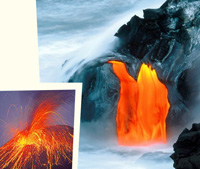Details
- Date: 13, 15, 20 and 22 October 2020
- 9.30 – 13.00 H. (CET)
- Online
- Registration deadline:02 October 2020.
- Further information: https://rawmatcop.eitrawmaterials.eu/
- Contact: rawmatcop@eitrawmaterials.eu
Overview
Raw materials are essential for human development and to fuel a future based on a decarbonized and circular economy. Yet, several key challenges in the supply of mineral resources are their availability and the social and environmental impacts of their exploration, extraction, processing, use and end-of-life. Earth Observation (EO) data and services from Copernicus provides a multi-scale coverage of the Earth’s surface and can support smarter exploration, more efficient and cost-effective primary production and boost environmental impact monitoring across the raw materials life cycle.
The RawMatCop Academy 2020, Copernicus for RawMaterials, offers a hands-on approach and will show you how to unlock the power of Copernicus for your company, organization or research along the entire life cycle of raw materials. During the RawMatCop Academy 2019 you will have the opportunity to work directly with Copernicus’ Sentinel satellite data and open source software to demonstrate how it can be used for:
- Securing primary and secondary mineral and material resources needed to transition to a sustainable and circular economy, and
- Monitoring environmental impact and increasing safety.
The course is a part of the RawMatCop programme, a cooperation between EIT RawMaterials and Copernicus, which aims to demonstrate new applications at the intersection between Earth observation data and the raw materials sector. It is funded by European Commission DG Internal Market, Industry, Entrepreneurship and SMEs (DG GROW), and EIT RawMaterials.
Course content and structure
The course will combine a mix of expert lectures and hands-on group work using case studies to demonstrate Copernicus applications.
As a course participant, you will hear from experts from industry and the research community on how Copernicus can make exploiting primary and secondary raw materials more cost-effective, safer and help you comply with environmental legislation.
Course topics:
- Introduction to Copernicus and Earth Observation data
- Basics of imaging technology, optical and active remote sensing in raw materials
- Optimised ways to monitor environmental impact and increase safety
- Copernicus’ tools to tackle the industrial and societal challenges of raw materials in Europe
Case studies & exercises:
- Mineral exploration and mapping of deposits
- Monitoring of mining activities including waste management
- Environmental impact monitoring
- Water detection
Who should apply to RawMatCop Academy 2020?
- R&D industrial managers across the value chain, from large industry but also SMEs and start-ups (e.g. exploration companies, mining companies, mining equipment manufacturers, etc)
- Senior management in industries across the value chain
- Development experts (professionals from government agencies)
- Scientists and researchers in EU and national governmental agencies
- Environmental experts
- Geoscientists (mining engineers, geologists, geomatics, geophysics, etc.)
- Doctoral and post-doctoral researchers.
Prerequisites
- Background either in earth sciences, environmental and natural resources management, engineering, mining and exploration, or GIS
- Number of Participants: 40
- Language: English
- Course fee: 40-50 €
Apply now for the RawMatCop short course 2020. Deadline for applications is 02 October 2020
Further details on the application and selection process is available on the Call for Applications.
About Copernicus
Copernicus is the European Union’s Earth Observation Programme, looking at our planet and its environment for the ultimate benefit of all.With the Copernicus programme, satellite data from “the Sentinels” is freely available with a high revisit time. This allows a better understanding of areas of interest at a low-cost and in a non-stop and in a stand-alone way. Therefore, Earth Observation (EO) methods contribute to a safe and sustainable supply of mineral resources through improving major aspects such as exploration efficiency, exploitation safety, and waste tracking of mineral resources.

